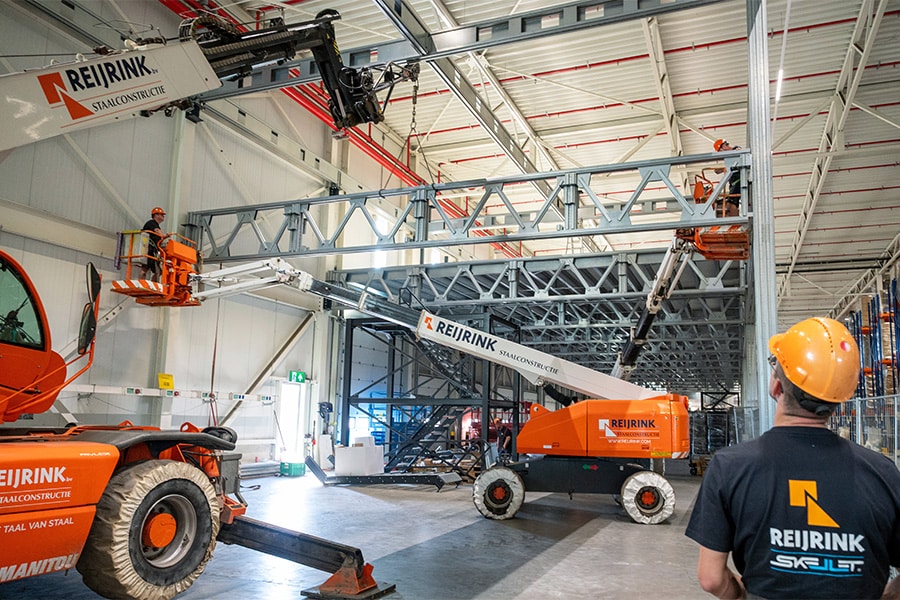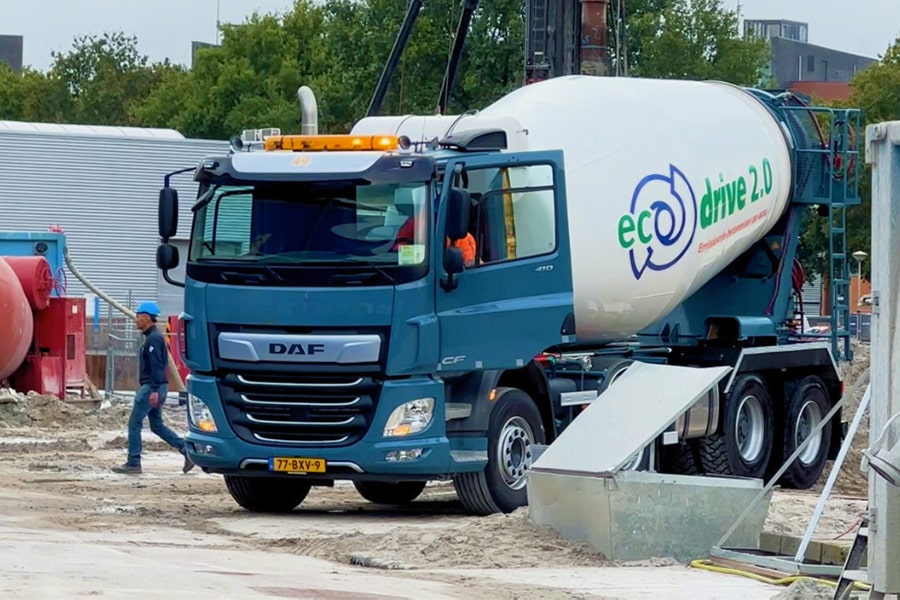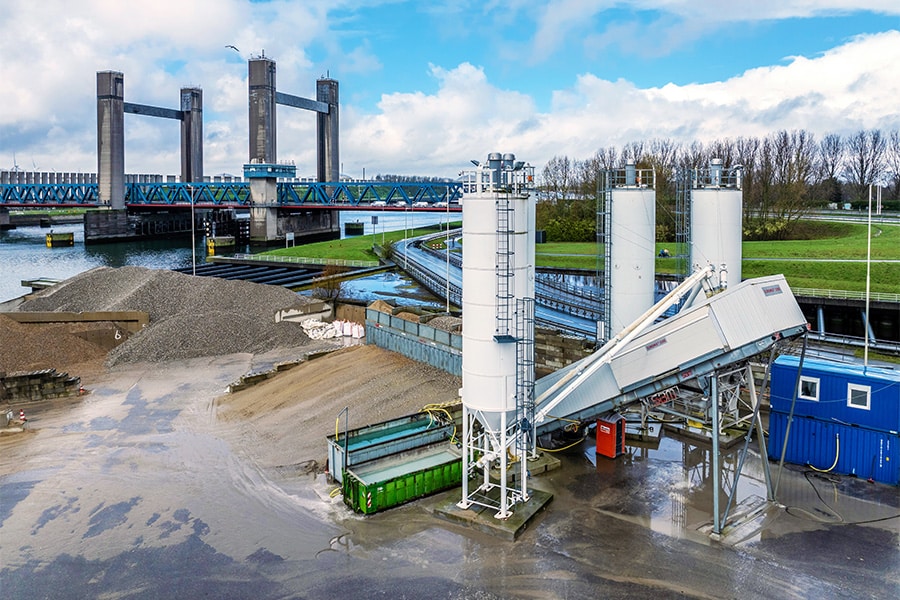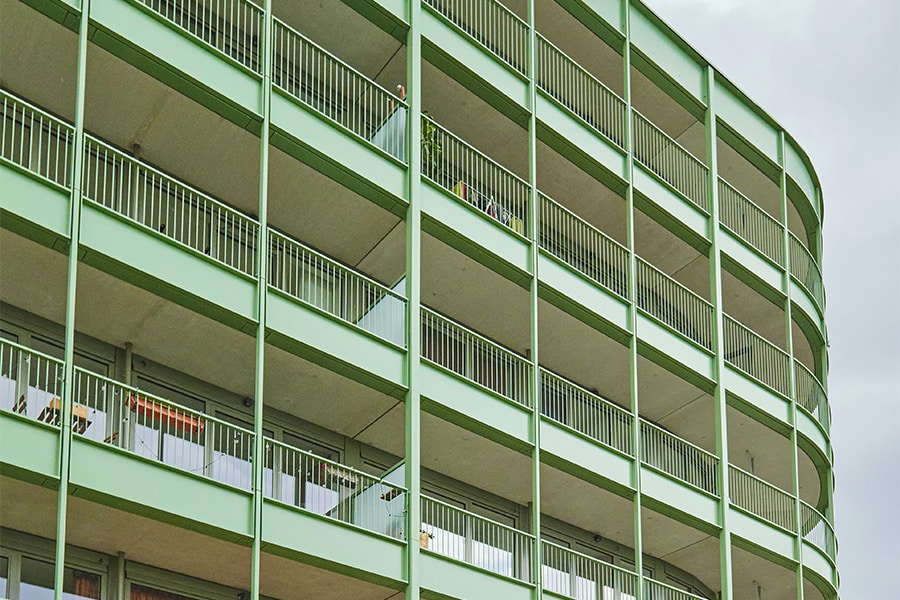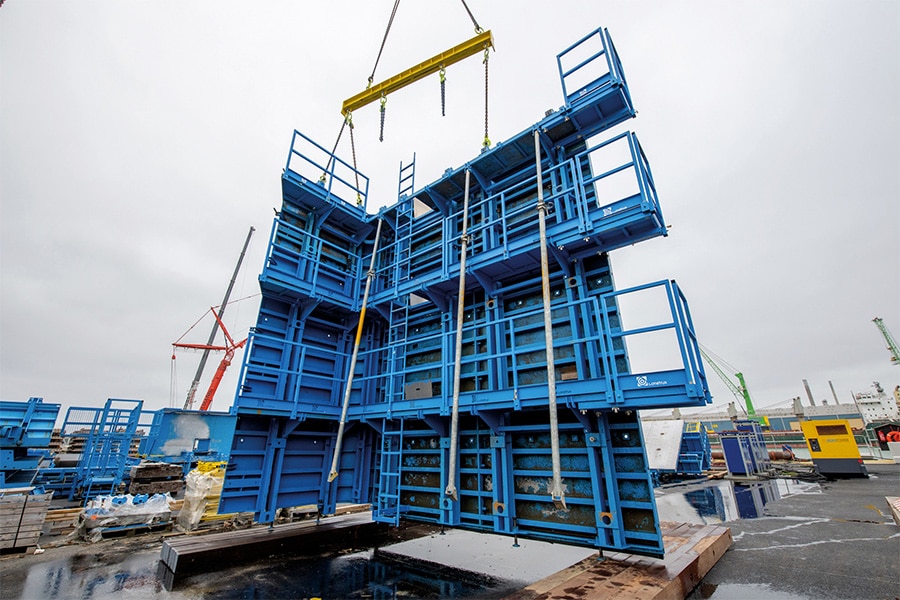
Custom formwork for corrugated protection walls on Princess Elisabeth Island
As part of the energy transition, Belgium is the first country in the world to build an artificial energy island at sea. The Princess Elisabeth Island will transmit renewable energy from offshore wind farms to the high-voltage onshore grid while also serving as an international energy hub, with interconnections to the United Kingdom and Denmark. Initiator Elia initiated the project, while the Belgian consortium TM EDISON - a collaboration between Jan De Nul and DEME - is responsible for the design and realization.
The island will be located 45 kilometers off the Belgian coast, in the middle of one of the world's busiest shipping lanes. With an area of six hectares and a future capacity of 3.5 GW, it represents a milestone in European offshore energy supply. Construction started in early 2024 and will take about two and a half years. The foundation consists of 23 concrete caissons placed around the island like a protective ring. Massive wave protection walls will be poured on top of these caissons, designed to safeguard the structure from the impact of wind, waves and currents.
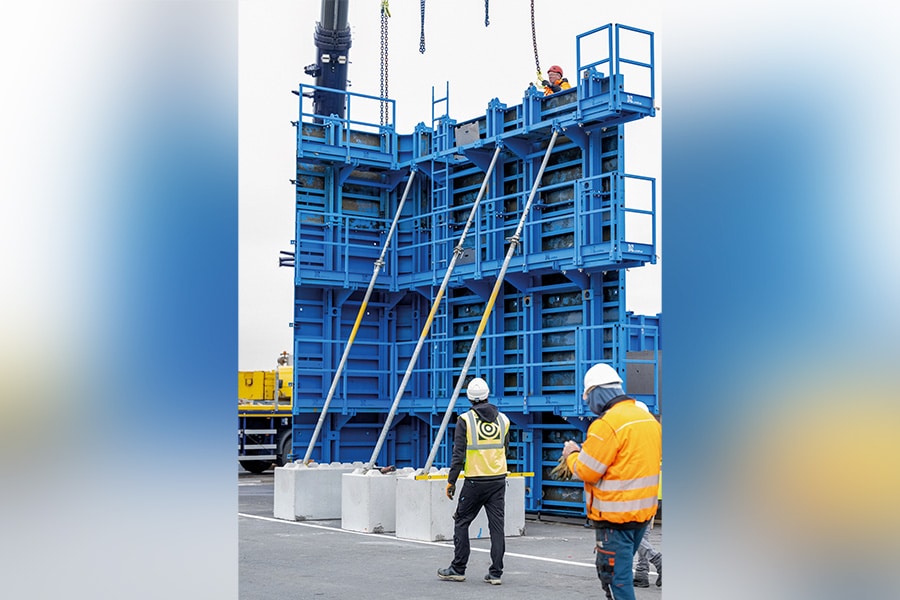
Customization down to the details
For the formwork of these corrugated protection walls, TM EDISON turned to Construx. The entire formwork package was developed and produced as a customized solution, tailored to the specific geometry of the walls and the complex logistical and safety requirements of an offshore yard.
Construx supplied four complete adjustable interior formwork systems for both walls and buttresses. These formworks are equipped with integrated walking platforms on both sides, allowing the executive staff to work safely and smoothly at height. For the exterior, three closing formworks are provided, also equipped with walking platforms and additional safety nets. All plating is made of stainless steel to ensure maximum durability in the aggressive sea climate. The formworks are designed for a pour length of 15.36 meters and a maximum wall height of 9.55 meters.
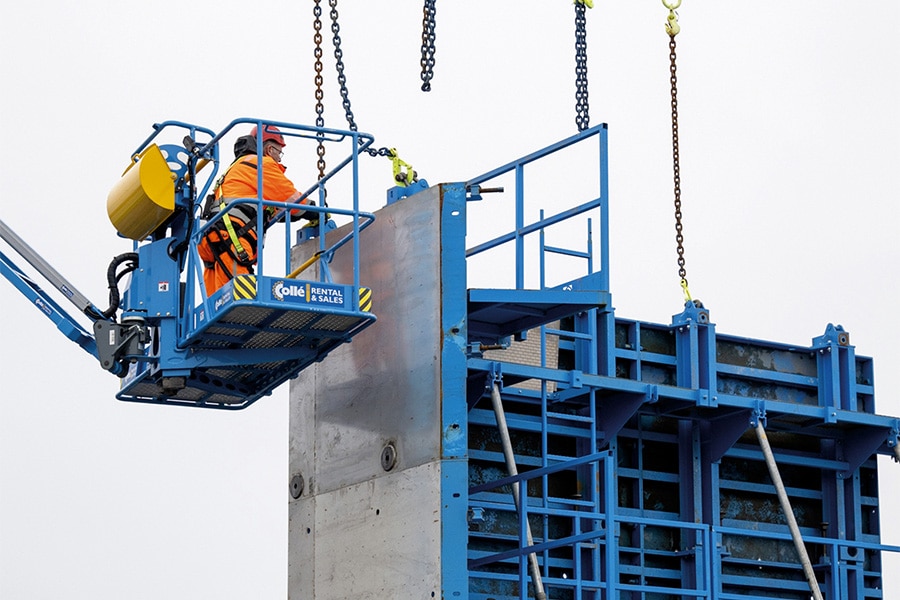
Flexible segmentation and smart details
To respond flexibly to the variable wall heights, the system was divided into horizontal segments of 4.8 m, 2 m, 1 m and a top piece of 1.75 m for the convex nose of the seawall. This modular construction allows the different pouring phases to be carried out efficiently and repeatably. An innovative center pin positioning system - with an adjustment range of about 40 mm - helps to avoid conflicts with the rebar during forming. In addition, Construx supplied the headboards and slab formwork, providing the contractor with a fully integrated formwork concept.
Strong together at sea
The cooperation between Construx and TM EDISON was in an open and solution-oriented atmosphere from the very beginning. The design teams worked closely together to translate the technical requirements into practical, robust and safe formwork elements. Thanks to the thorough preparation and prior test setups, most of which take place in Flushing harbor (onshore on land), execution at sea could start smoothly.
With this unique project, Construx underlines its expertise in developing complex custom formwork for marine and offshore applications and contributes to the realization of a European energy future at sea.
Heeft u vragen over dit artikel, project of product?
Neem dan rechtstreeks contact op met CONSTRUX.
 Contact opnemen
Contact opnemen
